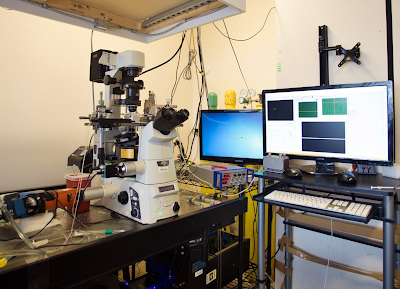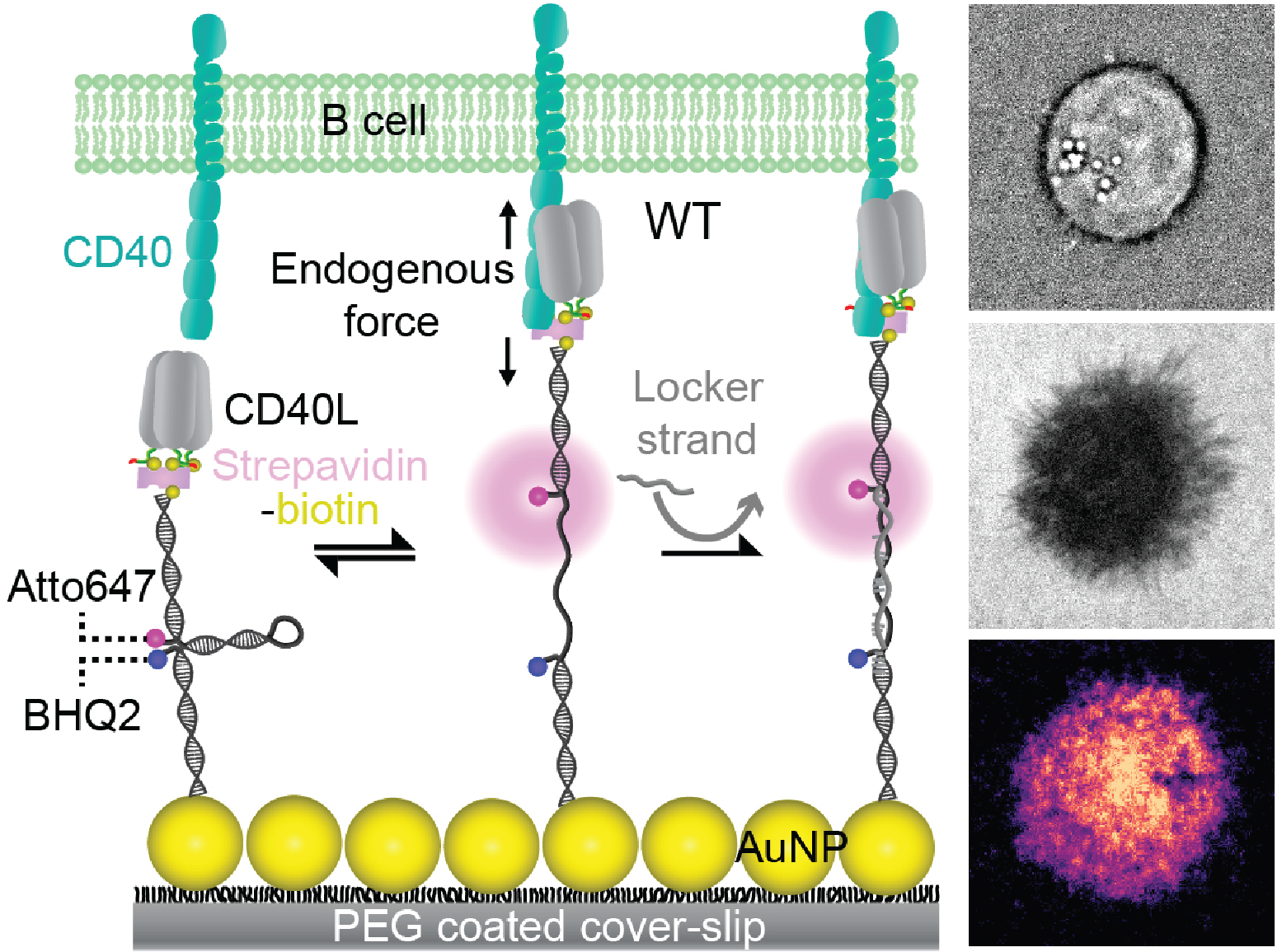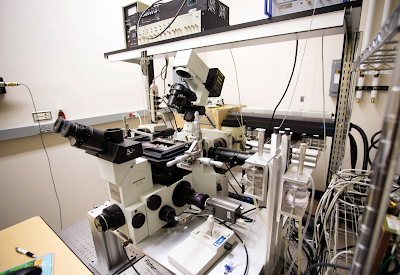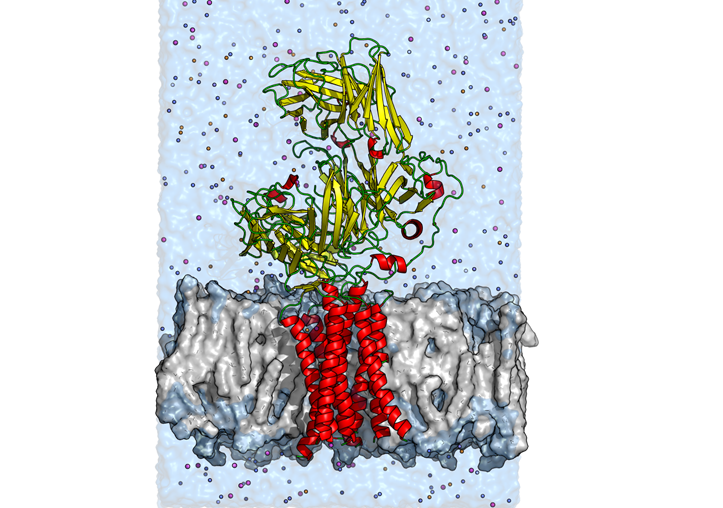Tools
We have developed and use various tools to probe the machanobiology of cells, with a focus on understanding receptor-ligand interactions at the single molecule level, but also understanding the impact of cellular forces on receptor mechanotrasduction and subsequent cellular behavior.
Featured
 Biomembrane Force Probe (BFP)
Biomembrane Force Probe (BFP)Utilizing a RBC as a force transducer, BFP measures single molecule interactions with ~1 pN resolution. BFP allows us to mesure receptor-ligand kinetics in the presence of force, and was instrumental in the discovery of Catch-bonds.
 Molecular Tension Probes (MTP)
Molecular Tension Probes (MTP)DNA-based MTPs allow us to probe the pico-Newton forces that cells endogenously apply on their membrane receptors that govern adhesion and antigen recognition. These hairpin probes unfold upon application of force and emit a fluorescent signal.
 Micropipette Adhesion Frequency
Micropipette Adhesion FrequencyMeasures in situ 2D binding kinetics, which has more biological relevance and better correlates with function compared to 3D affinity techniques
 Parallel Magnetic Force Activation (PMFA) assay
Parallel Magnetic Force Activation (PMFA) assayPMFA allows stimulation of cells with ligand-functionalized beads under magnetic force in a multi-well format using a magnetic well-plate lid. After stimulation, cells signaling can be analyzed by flow cytometry.
 Steered Molecular Dynamics Simulations (SMD)
Steered Molecular Dynamics Simulations (SMD)Molecular dynamics simulations under force allow us to simulate protein interactions to probe which protein residues are regulated by force. SMD can help us pin-point the residues involved in catch-bond interactions.
 Multi-zone microfluidic flow chamber
Multi-zone microfluidic flow chamberThese microfluidic chambers are coated with multiple proteins in different zones, allowing cells that are flowing in the chamber to encounter multiple ligands sequentially and with spatio-temporal control.
 Horizontal Atomic Force Microscope (HAFM)
Horizontal Atomic Force Microscope (HAFM)AFM on which the cantilever works horizontally. HAFM can measure receptor-ligand binding kinetics under force between two live cells
